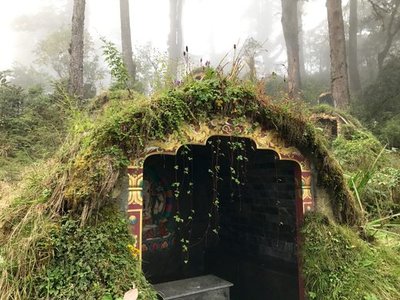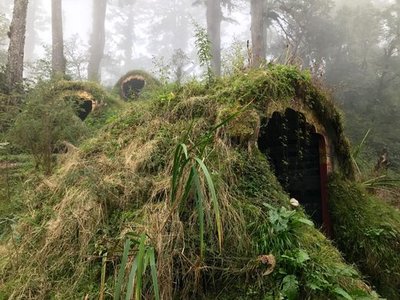Dochula Pass Meditation Caves


Dochula Pass is one of
Bhutan
’s most famous sites, perched at an altitude of 10,200 feet and located along the road from the country’s current capital of
Thimphu
to its former capital Punakha. A hidden surprise awaits the few who take the time to venture away from the touristy hub.
These curious visitors will discover the meditation caves tucked into the hills just above the pass. At first resembling Hobbit homes, these tiny, open-faced caverns are built from stone and painted in colorful detail with Buddhist symbolism. The
druk
, or dragon—Bhutan’s long-time national symbol and spirit animal—stretches over the cave entrance, bringing good luck and good tidings.
Meditation is a critical exercise for serious practitioners of Buddhism. To achieve enlightenment, monks and nuns will stay in one location, such as a meditation cave, for three days, three months, and three years. Each period is a trial for the next—if one can manage three days, one proceeds to three months. During this time, one may not speak with or cast eyes on another person. If you make it through three months, it’s time to take on three years.
While you may not have three years to spare while visiting these caves, you’d be missing a hidden gem of Dochula Pass if you didn’t take the extra 10-minute climb into the forest to explore these carefully constructed meditative retreats that nearly blend into the hills.
The short trek to the caves is a respite from the famous pass, which is home to 108 memorial chortens, or stupas, built in 2004 in honor of fallen Bhutanese soldiers killed in the battle against insurgents from
India
’s Assam region in 2003. Most visitors come to the pass for the magnificent views. On a clear day (which you’re lucky if you catch), you can take in Himalayan peaks including Mount Masanggang and Mount Gangkar Puensum, both over 22,000 feet tall.